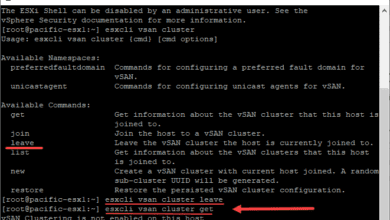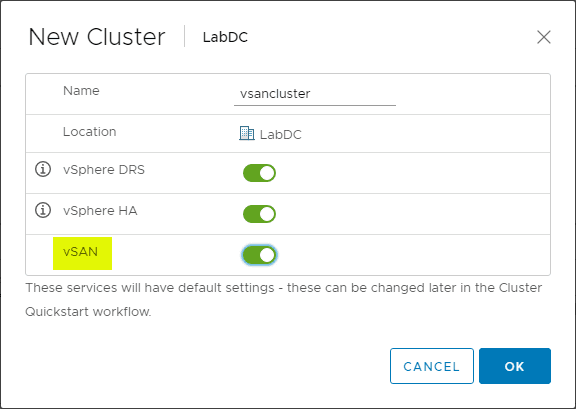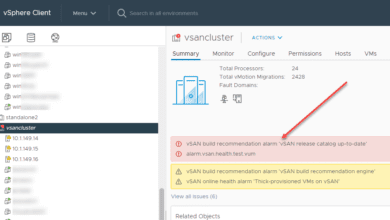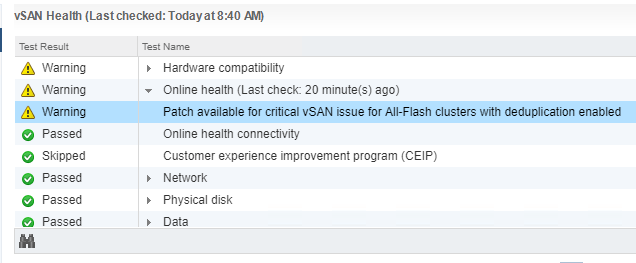VMware vSAN 6.7 Update 3 New Features
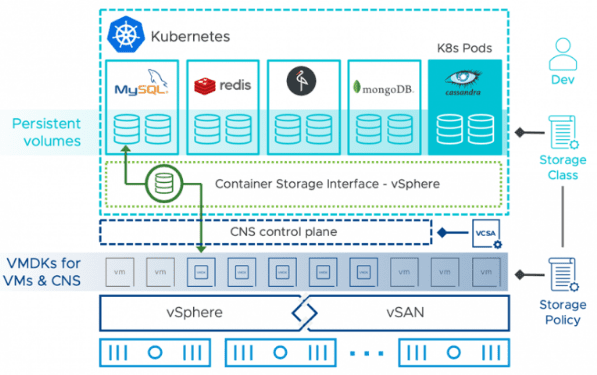
With the release of VMware vSphere 6.7 Update 3, one of the exciting upgrades that come with the new vSphere release is an updated version of vSAN. VMware vSAN 6.7 Update 3 brings great new features to the table that will serve to take the software-defined storage platform to new heights of features and functionality. It is evident that VMware is taking the container world seriously with each release of VMware vSphere as well as their other integrated solutions. Containers are certainly the future for applications, application development, and microservices architecture that will no doubt drive application architecture for the foreseeable future. Let’s take a look at VMware vSAN 6.7 Update 3 New Features and see the capabilities that have been added to this new release.
VMware vSAN Provides Next-Generation Storage for Containers
This release is all about containers and catering to containerized infrastructure from a storage perspective. There is no question that VMware is continuing to innovate in the vSAN platform. This has led to new and exciting ways of provisioning, managing, and configuring storage that have not been seen before. More and more customers are running nex-generation applications built on top of Kubernetes.
This new hybrid approach with existing applications transitioning into applications of the future can greatly benefit from some of the new features that VMware vSAN offers. One of the key areas that vSAN excels is offering familiar tools and processes for amdins provisioning storage for virtual machines or containers and allows “scaling storage at the pace of containers”.
VMware vSAN Update 3 also has more intelligence built into the platform. VMware has been moving toward a “self-driving infrastructure” for quite a while now. Developments and innovation in many of the recent VMware solutions have seen features and enhancements in this realm. VMware vSAN touts increased throughput and lower latency in certain situations that can enhance performance.
VMware vSAN 6.7 Update 3 New Features
Let’s take a look at some of the new features contained in VMware vSAN 6.7 Update 3 and see how it will extend the capabilities of provisioning storage for next-generation workloads. The following enhancements are listed on the VMware vSAN 6.7 Update 3 overview.
- Intelligent Operations
• Get enhanced estimates of when re-builds will be complete, as well as a near-continuous refresh of the estimate. Admins can assign high-priority objects to be re-built first and receive an ETA for every object in the queue. The information can also be filtered for easy searching.
• For upgrades that require a full data evacuation, vSAN performs a simulation to estimate success or failure so that admins can have more confidence in the upgrade process.
• In 6.7 Update 1, vSAN established intelligent guardrails, alerting you to data availability impacts when putting a host in maintenance mode. With Update 3, we’ve expanded your ability to test the impact of maintenance mode with a new UI for more detailed checks, as well as a customizable UI for testing.
• vSAN now handles difficult resync operations with ease. In severely capacity-strained scenarios, vSAN will take steps to mitigate resync impacts by rebalancing capacity as needed. If an issue does occur, new health checks surface alerts and proactively guide admins through a graceful recovery workflow to get the cluster back up and running quickly. - Proactive Rebalancing
Admins can now enable vSAN to proactively rebalance capacity distributed across the cluster, which aids in consistent performance for workloads. Set a policy for when rebalancing needs to occur and vSAN will actively monitor and remediate the cluster as necessary. - Smart Policy Implementation
One of the most-loved benefits of vSAN is the ability to change policies on the fly. For instance, if you need to update the fault tolerance for a particular VM or VMDK, it takes only a few clicks to update the policy, and then the software implements, monitors, and remediates it. Policy implementation is now more thoughtful, with availability in mind. In the event of large policy changes, vSAN will minimize resources used during implementation so as not to impact ongoing operations. - Increased Visibility for Storage Consumption
View raw vs. usable capacity, see how containers are consuming storage, and get alerts as data is consumed by VMs and containers. - Workflow-based Proactive Support Activation
Easily enable and configure Support Insight in several workflows – QuickStart, vSAN Services, online health checks – as well as on a new Customer Experience Improvement Program (CEIP) page. - Enhanced Performance
Higher throughput and more consistent performance using all-flash clusters, as well as faster resyncs, improves SLAs. Update 3 enables more consistent performance with small I/O writes, increased throughput of sequential I/O writes when dedup and compression is enabled, and faster resyncs due to increased task parallelization.
VMware vSAN 6.7 Update 3 Kubernetes Focused
One of the focuses of vSAN 6.7 Update 3 is integration with Kubernetes. Many organizations today are building their applications around the use of containers and container orchestration with Kubernetes (K8s).
There is a new Container Storage Interface (CSI) driver for vSphere that helps to enable this tight integration between Kubernetes and vSphere. This includes easy management of the persistent volumes used by containerized applications and allows this to be managed as easily as VM virtual disks.
A single UI helps to manage the storage of all the multiple orchestration systems that may be in use. Persistent volumes and virtual machine disks are enumerated the same in the UI allowing you as the administrator to filter the view based on what you want to look at such as filtering based on K8s metadata.
Improved Operations Management
Tasks such as capacity usage in the vSAN cluster can be managed even more intelligently with an enhanced UI that implements color-coding, consumption statistics, and capacity analysis for capacity planning.
Capacity management has been improved to allow resyncs even in environments where capacity may be strained. The vSphere administrator can choose whether or not to automate the process of rebalancing data across the cluster. Policies can now be changed in batches so that free capacity is not completely used by policy changes.
There are new improvements related to time estimates given by vSphere on how long certain operations will take such as resyncs, policy changes, data rebalancing and others.
There have been tremendous improvements in maintenance operations that give admins better insights into maintenance operations, upgrades, and other tasks. These include:
- Better precheck analysis including simulations of maintenance operations
- A new predictive DFC (Disk format Change) ensures there are no issues when performing a DFC related to deduplication, compression, or encryption.
- vSAN now provides the flexibility to upgrade to the next major release or apply patches
- vSAN now has improved interoperability with different versions of vCenter Server and ESXi. As long as moving forward, the vCenter Server is of the same “release line”, then it will work with newer versons of vSAN without upgrading vCenter beforehand.
- Easier enablement of vSAN support insight in vSAN 6.7 Update 3.
- You can now enable iSCSI LUNs from vSAN datastores without having to take the vSAN datastore offline first, which was a major dealbreaker before. SCSI-3 persistent reservations allow native support for Windows Server Failover clusters
Enhanced Performance with VMware vSAN 6.7 Update 3
It seems like VMware has done a great job with each release of vSAN with improving performance of the platform. The new Update 3 release has followed suit.
More predictable application performance is achieved with vSAN 6.7 Update 3. This has been accomplished by destaging data from the write buffer to the capacity tier which allows for more efficiency and consistency with increased throughput with sequential writes. This allows the much more consistent performance of the platform and less deviation between high and low latency. This also translates into reduced time necessary for resync operations from repairs or rebuild tasks. Additionally:
- Resyncs have been enhanced with more data in parallel with available resources
- Additional metrics have been exposed in vSAN 6.7 Update 3 for vSAN CPU utilization.
- Newly introduced vsantop is available in ESXi 6.7 Update 3. Makes it even easier to view how data and data services are being utilized.
Concluding Thoughts
There are certainly many great VMware vSAN 6.7 Update 3 New Features that expand the enhancements of vSAN in this release to make it an even more suitable and even preferable storage infrastructure for next-generation application infrastructure like containers orchestrated by Kubernetes. Overall the performance, scalability, management, and visibility improvements are going to be well worth the upgrade.

